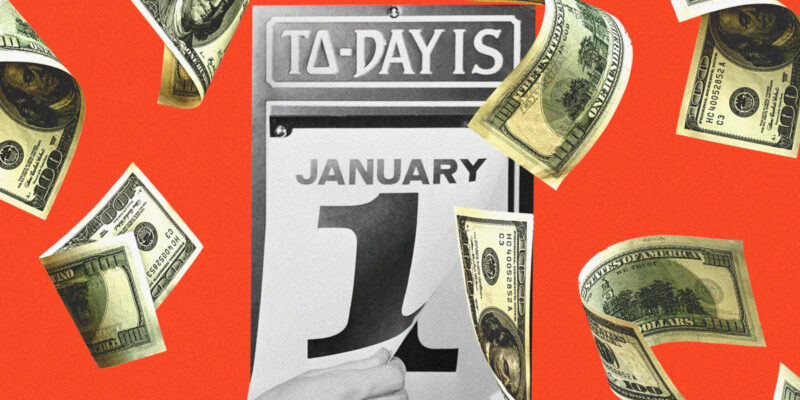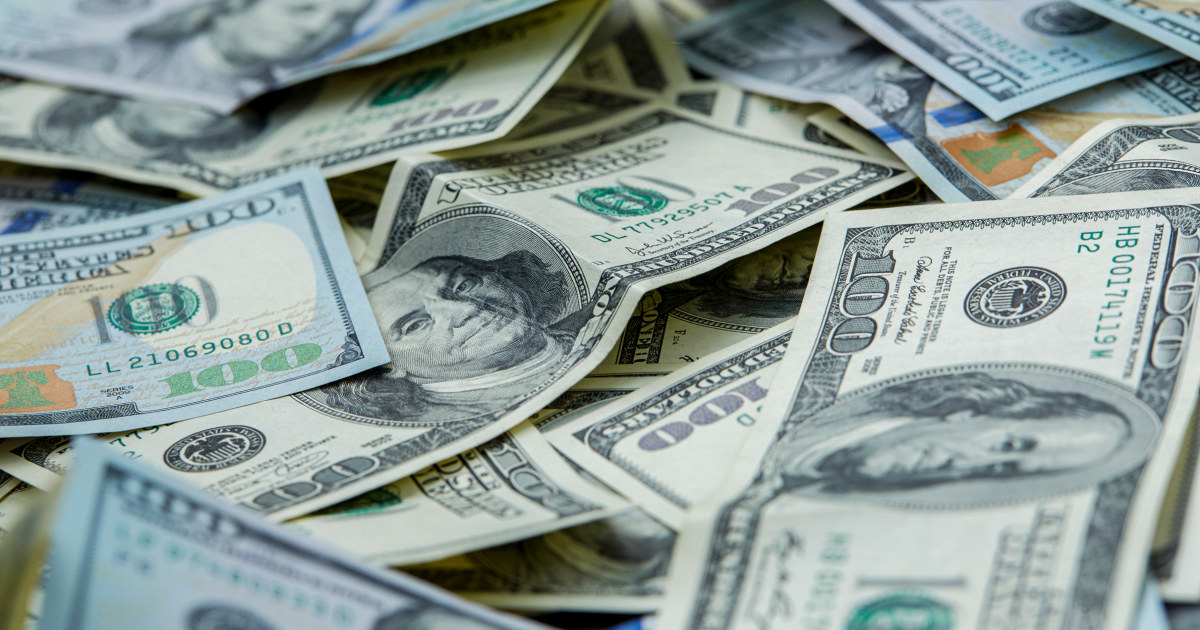
2025 could bring economic changes with the potential to hit millions of people’s wallets in different ways.
A series of stock market gains have fueled retirement investments at the same time that catastrophic storm damage is causing steep repair costs and making thousands of homes virtually uninsurable. Meanwhile, the incoming Trump administration is considering deeper tax cuts along with a rollback of newly built guardrails around consumer finance.
While uncertainty abounds in the year ahead, “people can empower themselves the most by focusing on what they can control — those things that will be valuable regardless of what happens in the world,” said Kevin Mahoney, founder of Illumint, a Washington, D.C.-based financial planning firm.
Here are a few ways to put yourself in the best financial position for whatever the next 12 months may bring.
Hunt for high returns as interest rates fall
Interest rates are coming down, and the impact should be felt more widely in the months ahead by anyone with a savings account, a mortgage, a credit card or a car loan. For many borrowers, that will bring a bit more relief from the nosebleed-level costs of carrying debt. But for many savers, it will mean less generous returns.
High-yield savings accounts are still topping out around 4.5%, beating the 2.7% annual inflation rate as of November. But as banks trim the interest payments they make to depositors, it’s important to make sure yours remain competitive, said Malik Lee, managing principal at Felton and Peel Wealth Management, an Atlanta-based firm.
“It’s one of the red flags that I’ve been warning clients of all the money market accounts,” said Lee, referring to a popular type of deposit account that limits debit transactions but is often high-yielding. “You’re sitting there thinking, ‘Hey, I’m getting 4 or 5% on this thing, because that’s where it initially was when rates were high, and now I’m getting 3%.”
While banks usually alert customers about rate changes, such notifications can lag, and some account holders might not have them switched on. A Bankrate survey last year found about two-thirds of Americans were earning suboptimal interest on their savings accounts.
The Federal Reserve is set to keep cutting rates, but it has signaled a slower pace than many had hoped, and with President-elect Donald Trump’s economic proposals raising risks of fueling inflation, the path for interest rates is far from certain.
So Lee said now is a good time to consider certificates of deposit, which can lock in a yield over a specified period. Start thinking about “what you need in daily liquidity versus what you need six months to a year from now,” he suggested.
The money in CDs usually can’t be withdrawn without penalties before the accounts fully mature, but customers can find rates from 4.25% to 4.65%, according to Bankrate. And those interest rates can be locked in for anywhere from a few months to up to five years, removing the need to anxiously monitor other types of savings accounts’ rates for fluctuations.
Bolster your emergency funds
The economy has been unpredictable since the recovery from the pandemic, and that isn’t likely to change after Trump starts implementing his proposed agenda, which includes sweeping new tariffs and mass deportations that could affect what consumers pay for baked goods and beer to homes.
Keeping extra funds in case of the unpredictable is one of the most durable tenets of financial advice, and planners say that hasn’t changed. Samuel Deane, president and CEO of Deane Wealth Management, a financial advisory firm, said he typically urges clients to stash enough to cover three to six months of living expenses. But workers in industries prone to high turnover or mass layoffs should consider a bigger buffer, he said.
Deane and other planners said they’ve noticed clients voicing more concerns about their financial well-being over the past year, when retailers have also contended with more budget-conscious shoppers.
During emergencies, many people turn to family, friends and even strangers for financial lifelines — as happened after two devastating hurricanes last fall. Even if you manage to dodge a crisis within the next year, Deane suggested, think ahead in case you’re called on to help others in your life who may not be so fortunate. That way, he said, “you’re not taking away from your own goals, and you’re not sacrificing yourself too much.”
Reassess your retirement strategy
Many retirement savers with accounts tied to stock markets have watched their balances swell over the past year, and despite some recent rough days on Wall Street, many investors remain optimistic about the impact of the next administration.
But while that remains to be seen, there’s already one certainty 401(k) holders can take advantage of: The maximum contribution will increase by $500 next year, topping out at $23,500 in annual pretax savings. The limit for catch-up contributions — money that older employees can add to their 401(k)s at the end of the year — is also increasing for 60-to-63-year-olds, effectively allowing them to boost their retirement contributions by as much as 14% from 2024.
Republicans’ Tax Cuts and Jobs Act, implemented during Trump’s first term, is set to expire at the end of the year, a deadline that has already triggered shifts in retirement planning: Fidelity Investments said it recorded a 45% year-over-year increase in Roth conversions as of July as account holders looked to evade potentially steeper tax bills.
During the election campaign, “I had been advising clients now is the time to do a Roth conversion to take gains, because your tax rate is going to be higher when these rates sunset,” said Kristen Euretig, founder and chief planner at the New York-based firm Brooklyn Plans. Converting an existing retirement account into a Roth IRA lets investors take advantage of high-return stocks and zero-tax withdrawals in exchange for paying taxes on those savings contributions up front.
But Euretig said there’s less uncertainty on that front now. “I think there’s a lot of political will to extend those rates” in Washington, she said, so investors should consider talking to advisers to figure out what long-term strategies might suit them best.
Lee said one piece of that puzzle should include government bonds, which “were getting pretty hammered” by the Fed’s interest rate hikes to curb inflation. Now, with rates going down, it may be worth giving those investments — often considered safe assets — a fresh look.
With rate cuts pushing up the yields of long-term bonds, those who invest “will probably have a higher-duration risk, which will then give you higher appreciation when the rates drop down,” Lee said.















